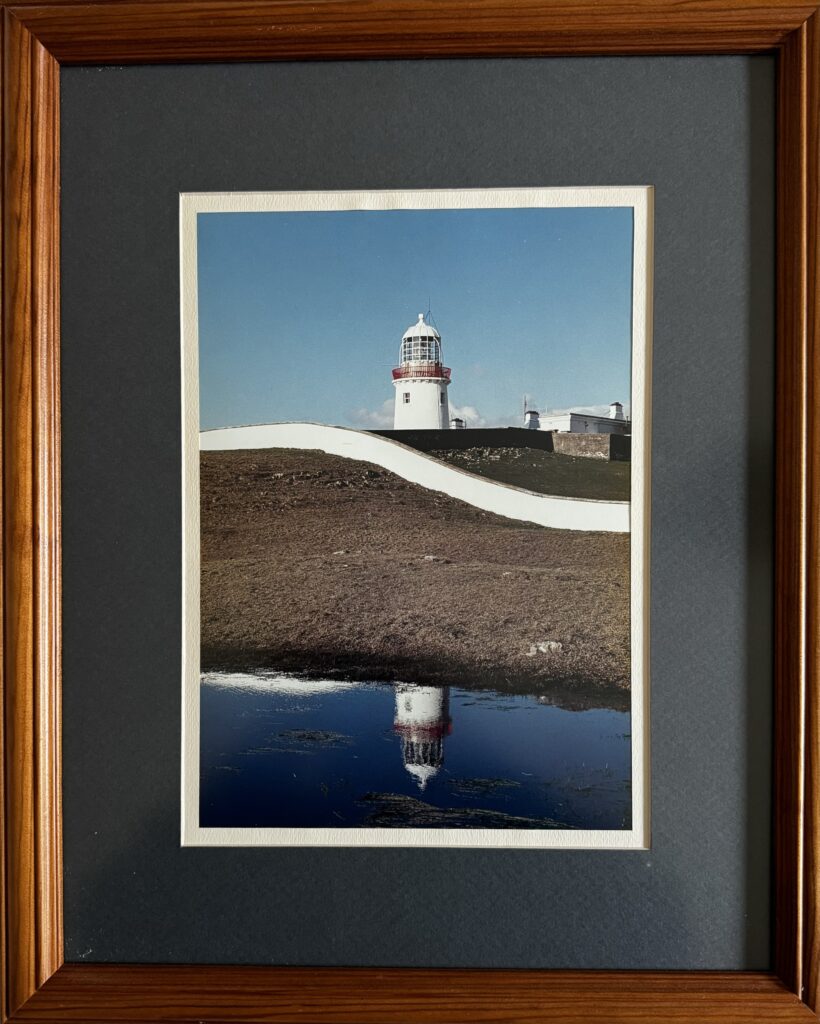The Lighthouse

This is not my photograph, but I wish it was, because it’s perfect. It’s by John Darch, a gifted landscape photographer who also happens to be my brother-in-law. The lighthouse is on St John’s Point in Co Donegal and I’ve often tried to photograph it. But John got it one day when it was reflected in a small pond, and the symmetry was, well, perfect. A real decisive moment.
Quote of the Day
”The oldest and strongest emotion of mankind is fear, and the oldest and strongest kind of fear is fear of the unknown.”
- H.P. Lovecraft
Musical alternative to the morning’s radio news
John Field | Nocturne No. 5 in B flat major
Long Read of the Day
I was wrong about E.M. Forster
Lovely essay by Julian Barnes.
Sometimes, when our tastes become more defined, they become narrower. But this doesn’t have to be the case. I want to address a rarer changing of the mind, which is altogether more enriching: when a writer you had previously been indifferent to, indeed actively despised, suddenly makes sense to you, and you realise – with, yes, a kind of joy – that at last you see the point of them.
I first read EM Forster when an English master handed out a list of Great Books to be read one summer holiday. A Passage to India was on that list. I still have the Penguin edition – a reprint of 1960, costing three shillings and sixpence – in which I read the novel. There are no notes in the margin, not a single cry of “Irony!” It clearly made little impression on me. Later, of my own volition, when I was about 20, I read A Room With a View, and actively began to take against Forster. It seemed to me a fusty, musty, dusty read, with rather antique prose and a storyline and characters which failed to engage me. The English novelists of the next generation – Huxley, Waugh, Greene – spoke to me with much more clarity.
Read on to find out what changed. It’s compelling IMHO.
My commonplace booklet
”Demand for High-End Cameras is Soaring”. So says the Economist in an interesting snippet.
Buying a Leica feels like buying a piece of art. Made in Germany, the cameras are sold in the swankiest neighbourhoods, sometimes in shops which double as galleries. The current models pack the latest imaging technology into sleek all-metal bodies. For decades they have been the chosen cameras of masters of photography such as Henri Cartier-Bresson (pictured) and Annie Leibovitz. Their price is extravagant. Leica’s latest compact model, the Q3, costs around $6,000 (an accompanying thumb rest is available for an extra $245). Opt for a flagship M-series camera with a couple of lenses and the bill can easily run into five figures.
Today few see the need for a dedicated camera. High-quality pictures can be snapped, edited and uploaded onto social media all with your smartphone. When in 2011 an interviewer asked Ms Leibovitz to recommend a camera, she responded by taking out her iPhone 4s, calling it “the snapshot camera of today”. The camera on Apple’s flagship device has improved with each new version, including the one released this week. Since Ms Leibovitz’s remarks, the share of photos taken on smartphones has grown from 25% to over 90%. Digital camera sales, meanwhile, have fallen by 93%. Entry-level models are steadily disappearing from the market.
Premium cameras, however, are bucking the trend. Waiting lists for Leica’s Q3, released in 2023, were initially six-months long. Its success contributed to record sales at the 110-year-old firm last year. The latest version of the premium x100 camera made by Fujifilm has been sold out since its launch in February. The cameras are being flogged online for multiples of their original price of $1,600. Rivals such as Nikon have also begun to prioritise higher-end models. As a result, the average price of a camera has tripled in the past six years, according to the Camera and Imaging Products Association (CIPA), a trade group.
One reason (mentioned in the piece) is that while modern smartphone cameras (like the one in the iPhone 15 Pro) are really pretty good, wedding photographers who showed up just with a smartphone might not impress the client.
I’ve used Leicas for aeons and only once bought a brand new one. It’s still going strong. Also, Leica has revived its M6 film camera, which apparently is selling well. Perhaps this is an echo of what’s happening with analog Hi-Fi amplifiers and turntables with the revival of vinyl?
Linkblog
Something I noticed, while drinking from the Internet firehose.
- Smart Goose Deterrent System Link. Not a problem we have, but I like the combination of ingenuity and humaneness. Thanks to Tyler Cowen for the link.
This Blog is also available as an email three days a week. If you think that might suit you better, why not subscribe? One email on Mondays, Wednesdays and Fridays delivered to your inbox at 6am UK time. It’s free, and you can always unsubscribe if you conclude your inbox is full enough already!
